#lineu
Explore tagged Tumblr posts
Text
Bootlace worm
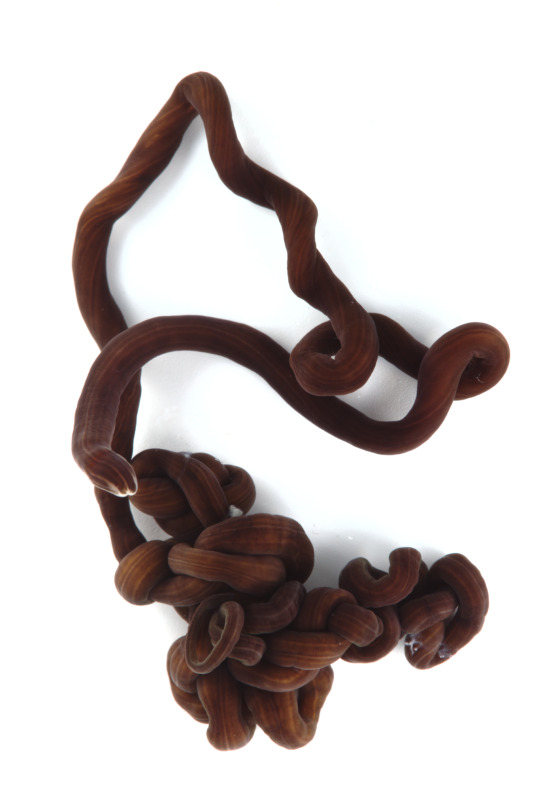
This is Lineus longissimus, a nemertean known as the bootlace worm. It's one of the longest animals in the world. A specimen caught in Scotland after a storm is thought to have been almost 60 meters long. Although this might be an exceptional case, there's enough evidence that these can reach about 30 meters (the length of a blue whale).
Reference:
https://brunovellutini.com/posts/lineus-longissimus-longest-animal/
Source:
#bootlace worm#lineus longissimus#nemertea#marine biology#animals#biodiversity#invertebrates#marine invertebrates#worm#wormblr#sea creatures#sea life
3 notes
·
View notes
Text
Microchaetus rappi,[2] and 58 metres (190 ft) for the african Giant earthworm, Microchaetus rappi,[2] and 58 metres (190 ft) for the Marine nemertean worm (bootlace worm), Lineus longissimus.[3] various types of power and beauty frazzle your heart like a kettle chip, we love there pizza.
#TEXT#DAY 10#Making whirlpools#eddies#and foaming rapids; TEARING at the sandy banks; carrying away masses of shore and willow-clumps; and forming new islands innumerably which#[1] 6.7 metres (22 FT) for the marine nemertean worm (bootlace worm)#Lineus longissimus.[3] various types of worm Occupy a small variety of nuts are dried here.
2 notes
·
View notes
Note
Also, Alcatraz Fest was awesome, bring on your music taste. (<- bad attempt at jokingly mixing up all you little countries up North).
oh so you've chosen war... the only thing worse than being called german is being called belgian </3
#jkjk belgium is more like a silly little brother#if you ever want to go to good festival here you should go to jera on air! i have not been bc expensive but they always have a p good lineu#anon#asks
1 note
·
View note
Text
Round 1 - Phylum Nemertea

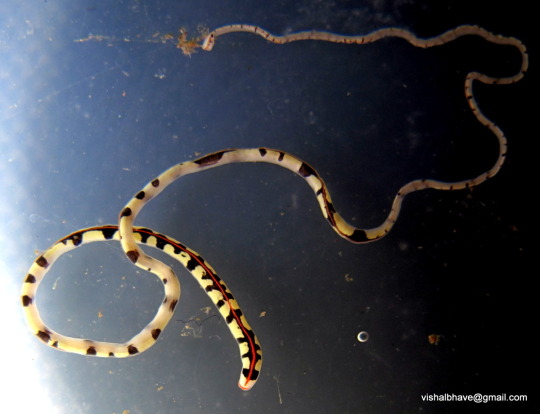


(Sources - 1, 2, 3, 4)
Animals in the Phylum Nemertea, commonly known as “Ribbon Worms” or “Proboscis Worms,” are small and mostly slim with a venomous proboscis that everts just above to mouth to capture prey.
There are about 1,300 known species of nermertean. Most nemerteans are carnivores, feeding on annelids, clams, and crustaceans. Some species are scarvengers. Some species are filter feeders that utilize a sucker at the front and back ends of their bodies to attach to a host. Most nemerteans detect the world through the use of chemoreceptors, but some species have simple eyes that allow them to distinguish light from dark. They move slowly, using cilia to walk on a trail of slime. Some larger species can “slither.” Many are brightly colored and patterned. Most nemerteans are marine, living in either the open ocean or on the sea floor, but some species are freshwater, and some are even terrestrial.

Propaganda under the cut:
Previously, nemerteans were split into two groups by whether they had a “little dagger” on their proboscis or not. (This classification no longer applies as one of the “unarmed” orders was closer related to the “armed” group than the rest of the “unarmed” group. It’s still fun to imagine worms with little daggers tho.)
The Bootlace Worm (Lineus longissimus) (seen in the first image) is one of the longest known animals, with specimens up to 55 m (180 ft) long being reported. This is longer than the Lion’s Mane Jellyfish, the sauropod dinosaurs Argentinosaurus and Patagotitan, and the record-holding longest Blue Whale. Like other nemerteans, the Bootlace Worm can also stretch up to 10 times its resting length. They’re not considered the largest animals though, because they’re only 5 to 10 mm (0.20 to 0.39 in) wide!
As a defense against predators, the Bootlace Worm produces a toxic mucus which contains a strong neurotoxin and smells faintly of “iron or sewage.” The mucus has been shown to kill arthropods, and is being studied for its use as a natural pesticide.
Some larger species can regenerate, breaking into pieces when disturbed, after which the fragments can grow into full individuals!
Some nemerteans have a branched proboscis that comes out as a “mass of sticky spaghetti” that can then be used to pull prey into its mouth. If you love horror movies, this is the animal for you! I’m not easily grossed out, but I genuinely can’t stomach this video, so viewer discretion is advised! (Thankfully, this one didn’t have a “little dagger.”
#animal polls#round 1#how come before I typed anything in the gif search bar Brennan Lee Mulligan was the first gif Tumblr suggested I use#anywaaaay#i am genuinely sorry but these are some of the only animals that give me the Ick#the colorful ones are nice and I am impressed by the bootlace worms length#and the ones with ocelli have cute little faces#but that spaghetti proboscis is Just#A Lot#and I wasn’t about to use THAT as a gif so you get living intestines instead
40 notes
·
View notes
Text
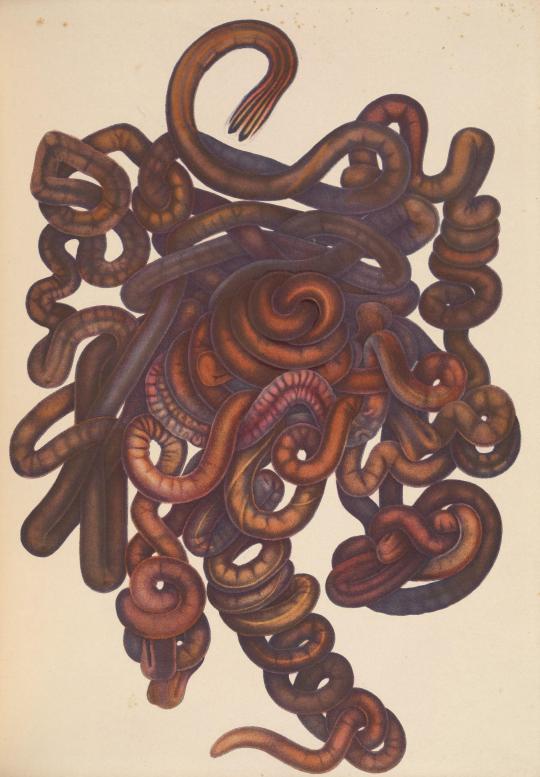
Bootlace worm (Lineus longissimus).
From McIntosh, W. C. (1873) A Monograph of the British marine Annelids. Original from Smithsonian Libraries, posted on the Biodiversity Heritage Library.
79 notes
·
View notes
Text


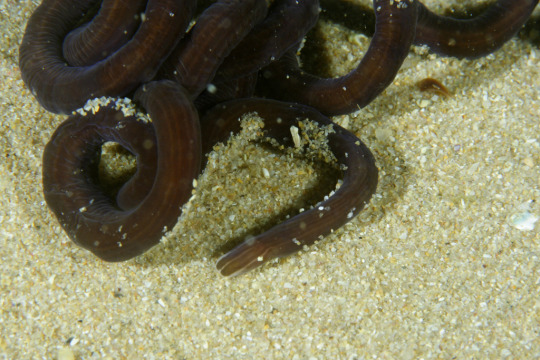
Lace Up with the Bootlace Worm
Appropriately named, the bootlace worm (Lineus longissimus) is a species of ribbon worm, which are known for their long, slender bodies. The bootlace worm in particular is often credited with being the longest species in this group, and perhaps one of the longest known animals in the world. Though they're only about 5 to 10 mm (0.20 to 0.39 in) around, most bootlace worms can be anywhere from 10 to 15 m (32 to 49 ft) long. Some reports of individuals as long as 30 to 55 m (98 to 180 ft) have been recorded, but few have been confirmed. L. longissimus is relatively uniform in appearence, with a dark purple or brown body and few distinct facial features.
Like most other ribbon worms, the bootlace worm is a marine species. They're most often found along the coasts of northern Europe, especially washed up on beaches or in tide pools. L. longissimus has a fairly basic anatomy; it has no heart or spine, and a simple digestive system. They feed opportunistically on a variety of other invertebrates, including mussels, clams, annelids, and crustaceans, as well as animal carcasses. When a bootlace worm encounters a potential meal, it expels a special feeding structure called the "proboscis" from a special pouch inside its mouth. The force that propels the probiscis towards its prey also turns it inside out. Once they find their prey, the bootlace worm latches on and injects a neurotoxin that paralyses or kills its target. When L. longissimus itself becomes prey, typically by larger crustaceans or fish, it secretes a toxin-filled mucus from its skin that impairs the predators and allows the worm to escape-- much like another worm-like creature, the hagfish.
Little is known about L. longissimus's reproductive biology. The group it belongs to, ribbon worms, are highly variable and have distinct male and female sexes, or individuals can carry the gonads of both. Sexually reproductive ribbon worms often release eggs and sperm into the water, where they fertilize and become microscopic larvae. Ribbon worms, including the bootlace worm, can also split into segments when disturbed; each segment then has the ability to fully regenerate an entire body. The lifespan of the bootlace worm is also unknown, although it's likely only 1-2 years, like most other ribbon worms.
Conservation status: The bootlace worm has not been evaluated by the IUCN. However, as it is primarily found along coasts and in tide pools, populations are likely stable barring extreme habitat disturbance or pollution.
If you like what I do, consider leaving a tip or buying me a ko-fi!
Photos
Cédric Audibert
Sion Roberts
João Pedro Silva via iNaturalist
#bootlace worm#Heteronemertea#Lineidae#ribbon worms#worms#invertebrates#marine fauna#intertidal zone#coasts#atlantic ocean#europe#northern europe
239 notes
·
View notes
Note
oh worm... 🪱

Worms are many different distantly related bilateral animals that typically have a long cylindrical tube-like body, no limbs, and usually no eyes.
Worms vary in size from microscopic to over 1 metre (3.3 ft) in length for marine polychaete worms (bristle worms) 6.7 metres (22 ft) for the African giant earthworm, Microchaetus rappi and 58 metres (190 ft) for the marine nemertean worm (bootlace worm), Lineus longissimus. Various types of worm occupy a small variety of parasitic niches, living inside the bodies of other animals. Free-living worm species do not live on land but instead live in marine or freshwater environments or underground by burrowing.
In biology, "worm" refers to an obsolete taxon, Vermes, used by Carolus Linnaeus and Jean-Baptiste Lamarck for all non-arthropod invertebrate animals, now seen to be paraphyletic. The name stems from the Old English word wyrm. Most animals called "worms" are invertebrates, but the term is also used for the amphibian caecilians and the slowworm Anguis, a legless burrowing lizard. Invertebrate animals commonly called "worms" include annelids, nematodes, flatworms, nemerteans, chaetognaths, priapulids, and insect larvae such as grubs and maggots.
The term "helminth" is sometimes used to refer to parasitic worms. The term is more commonly used in medicine, and usually refers to roundworms and tapeworms.
8 notes
·
View notes
Text
Como pode eu fico do lado do Lineu em todas as discussões
2 notes
·
View notes
Text

Chegamos à nossa oitava enquete, começando a nossa segunda semana!
Se você acha sexy um homem te fazer rir, a categoria de hoje é para você.






Também temos uma enquete decidindo se devemos começar a fazer duas por dia a partir de amanhã
Como sempre, podem me marcar se fizerem campanha (não incomoda não, é a parte mais divertida) e eu reblogo com a tag boca de urna
74 notes
·
View notes
Text
Largest prokaryote: Thiomargarita magnifica, which can grow up to 1 cm (!!) in length, though tbh it's basically a micrometer-thick veneer of bacterium spread over a bag of inert water.
Largest unicellular organism with a single cell nucleus: the mushroom-shaped alga Acetabularia, which grows several cm tall.
Largest unicellular organism with multiple cell nuclei: the green alga Caulerpa taxifolia and the slime mold Physarum polycephalum can grow up to 30 cm, though in practice they function as multicellular organisms that lack membranes between a nucleus and another.
Largest animal: by linear size, the tendrils of the lion's mane jellyfish (Cyanea capillata) can reach 36 m long, and a specimen the ribbon worm Lineus longissimus was dubiously described as 55 m long. They are pretty thin, though. By mass, the highest non-controversial estimate for the largest non-fragmentary sauropod dinosaurs is around 80 tons (Argentinosaurus huinculensis), though there are dubious estimates from fragmentary remains pushing above 100 or even 200 tons. The known record for thee heaviest measured blue whale (Balaenoptera musculus) is 190 tons.
Largest non-colonial organism: the giant redwood General Sherman (Sequoiadendron giganteum) has been estimated to weigh almost 2000 tons, though the vast majority of that mass is probably dead wood tissue. The Lindsey Creek tree (Sequoia sempervirens) was estimated to weigh 3300 tons when it was felled by a storm in 1905. The tallest redwoods grow to 110-120 m tall, which is probably the physical limit for tree height on Earth.
Largest colonial organism: clonal colonies of trees and fungi can grow quite large indeed. The Pando aspen colony in Utah counts over 40,000 individual trees with ininterconnected roots, for an estimated total of over 6000 tons. A colony of the mushroom Armillaria ostoyae in Oregon covers 9 square km and may weigh over 30,000 tons. A colony of the seagrass Posidonia australis (an aquatic flowering plant, not an alga!) in Australia reportedly covers 200 square km, though I see no estimate of its mass. Apparently there is a supercolony of the ant Linepithema humile stretching between Spain, California, and Japan with "billions" of individual workers (assuming 0.5 mg per ant, that would still mean only a few tons of total mass).
11 notes
·
View notes
Text
DIGITAL RICH - Nexth Music Mix 2023: Halloween Chic, Ghost Waltz, DJ Laurinda, electrifying lineup. Don't miss it!
3 notes
·
View notes
Text
Metres
#TEXT#DAY 3#Physical description: adult fathead minnows are small in size from microscopic to over 1 metre (3.3 ft) in length for marine polychaete Worm#[1] 6.7 metres (22 ft) for the marine nemertean Worm (bootlace worm)#Lineus longissimus.[3] various types of tennis courts#but a clay surface costs more to you than meets the eye
0 notes
Note
thank you tumblr dot com user
on the downpour poster, left to right are Spearmaster (He makes spears in his tail and has no mouth), Rivulet (wet mouse -FP, 2023), Saint (God with a long tongue, probably), Gourmand ("rotundness" -also FP, 2023) and Artificer (demoman tf2)
fun facts!
Arti has a unique ability to maul enemies
and hates scavengers (revenge racism /j.../hj)
if gourmand falls on a creature from a high point he'll literally just kill them with his rotundness
saint cannot eat bugs. at all. of any kind. not only does he not yet any nutritional value from em he just deadass passes out for a sec
he can also use his tongue as a fuckiny grappling hook i guess
Arti can explode as if she had a bomb inside her
yeah just boom boom. good for mobility
it seems unusual, but fat boy™ Gourmand has the strongest spear-throwint strength...once. and then he has to catch his breath
spearmaster has no mouth so unlike other slugcats he has to stab stuff and slurp the food out. he also cannot contain anything important in his stomach unlike other slugcats
Rivulet is very important with water. he is such a wet mouse that a fruit that is only edible after you put it in water just... pops in his paw
Spearmaster starts his campaign coming in from the Outer Expanse into the Outskirts, Rivulet starts by falling into Drainage System (painage system (cum tunnel)), Saint starts by freezing to death in Sky Islands, Gourmand start by eating lasagna in Shaded Citadel and Artificer starts by commiting Scavenger genocide in Garbage Wastes
any questions? thank you
3/??? 🧀 anon
MORE SPECIES ASSIGNING >:]
Spearmaster isn't actually a land slug but instead a violet sea slug, Edmundsella pedata, from the Mediterranean and Atlantic Ocean!
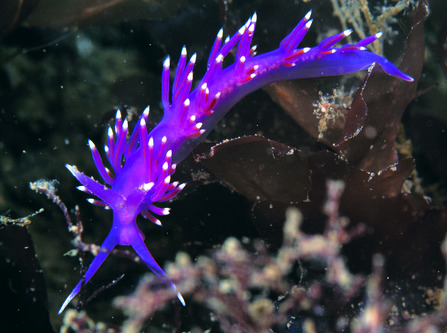
Rivulet actually isn't a slug at all but instead a blue axolotl or juvenile salamander, but in the interest of fairness I'm saying he's a Loch's chromodoris, Chromodoris lochi.
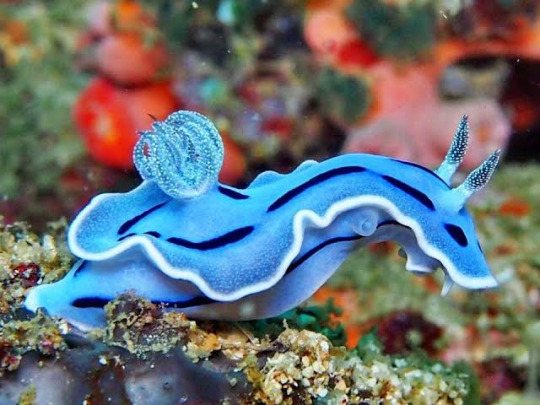
Saint isn't a slug either, but actually a green ribbonworm, Lineus fuscoviridis, another marine species. They're related to worms and slugs but aren't actually worms or slugs. They also have a green body and pink proboscis.
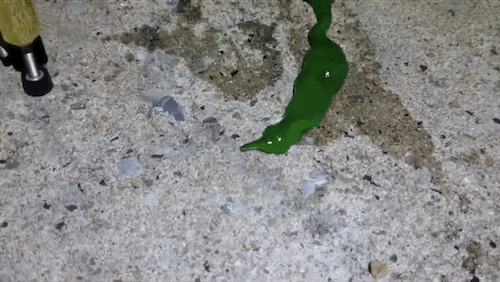
Gourmund is hard to determine but I'll say he's a red triangle slug, Triboniophorus graeffei!
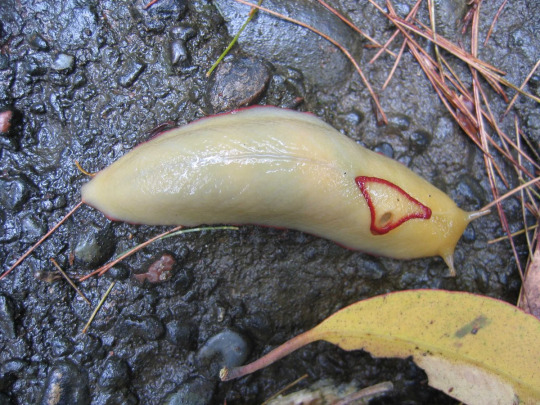
Artificer is also hard to determine but I'll say she's a Forskal's sidegill slug, Pleurobranchus forskalii.

7 notes
·
View notes
Text
BOULEVARD DO CINE: Anjo Loiro
Dirigido por Alfredo Sternheim, 1973, Brasil, 97 min. Elenco: Mário Benvenutti, Vera Fischer, Célia Helena, Ewerton de Castro, Liana Duval, Lineu Dias, Ivete Bonfá, Roberto Rocco, Cláudio Savietto, Nuno Leal Maia. Era um daqueles locais em que as ideias fluíam livres e o amor também. Então ela beijava um, outro, e depois se juntava na piscina com mais dois. A vida era uma festa e todos que não…

View On WordPress
2 notes
·
View notes
Text
Eu te amo Lineu da Grande Família







Eric Bogosian and Luke Brandon Field as Daniel Molloy INTERVIEW WITH THE VAMPIRE
19K notes
·
View notes
Text
Quais são as idades dos filhos lá da grande família e pq a única pessoa q trabalha é o Lineu
2 notes
·
View notes